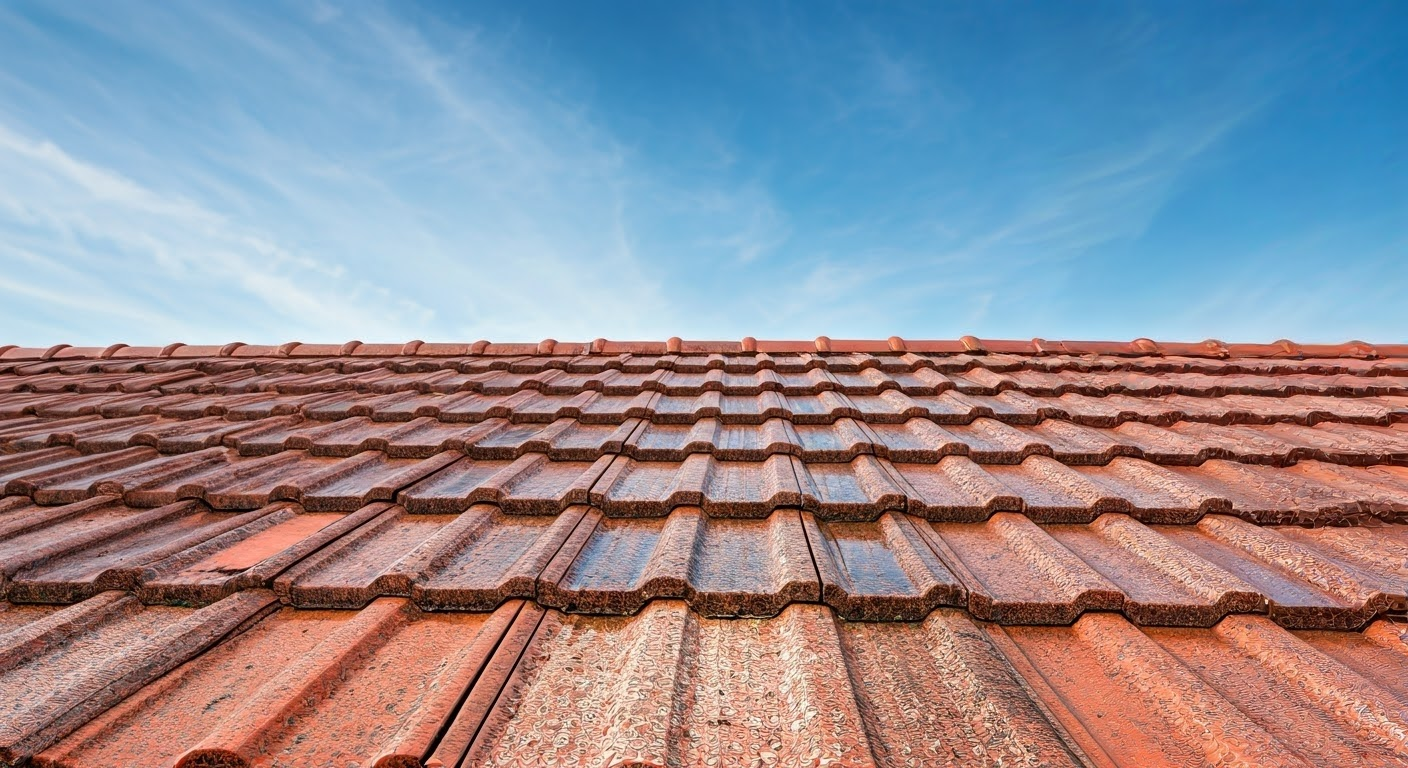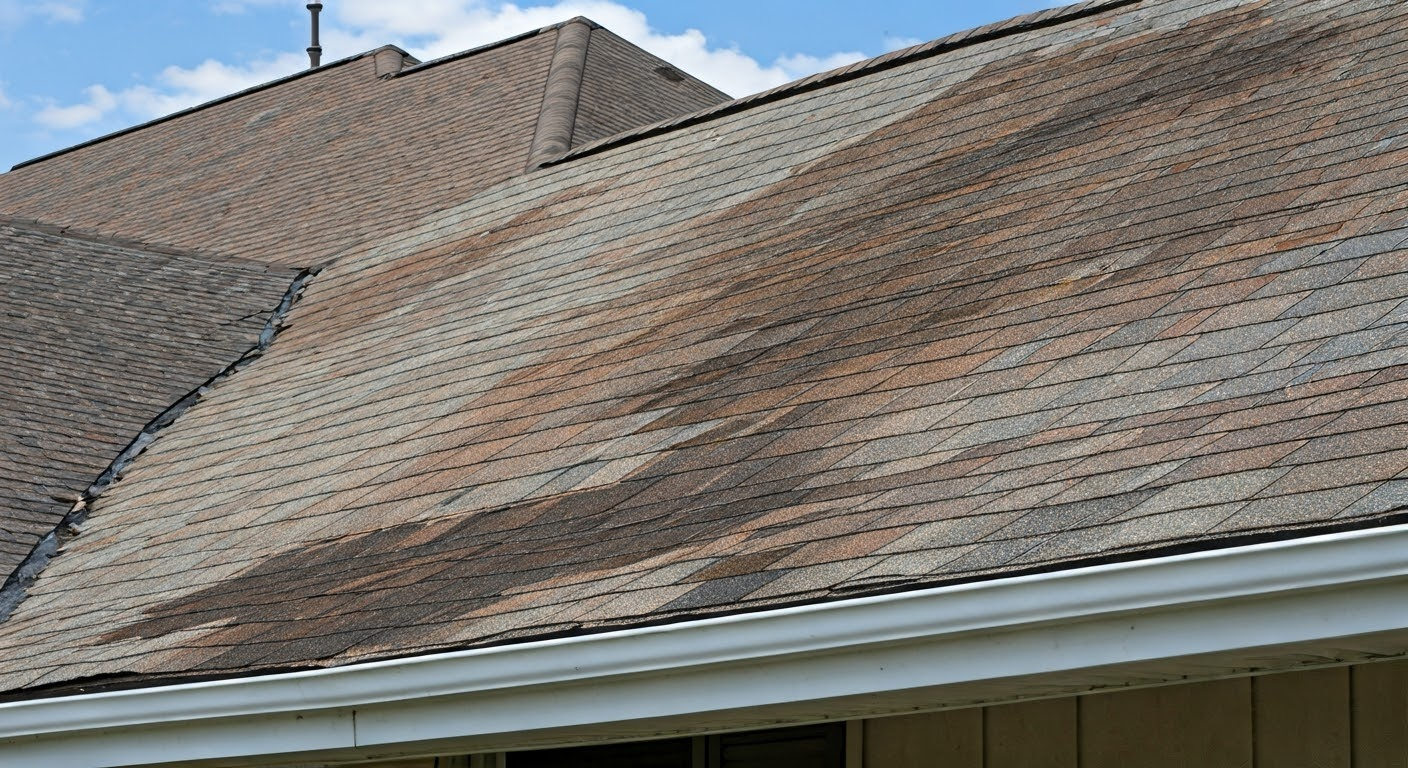Understanding Roof Damage: Types and Repair Solutions

Key Highlights
- Roof damage can arise from various causes, including high winds, hail storms, and poor installation, affecting your home’s structural integrity.
- Recognizing signs like missing shingles, water stains, and damaged flashing can help prevent severe issues.
- Roof materials such as asphalt shingles and metal roofs have different lifespans and unique vulnerabilities.
- Professional inspections are essential to determine whether repairs or replacements are necessary.
- Temporary fixes can address immediate concerns, while durable materials ensure lasting solutions.
- Regular inspections and timely actions safeguard the life of your roof and save costs in the long run.
Introduction
Your roof is important for keeping your home safe and helping save energy. If it is damaged, this protection can be at risk. Homeowners need to know what causes roof damage and how to fix it to keep their property strong and valuable. Things like high winds, hail storms, and old materials can cause problems like leaks and weak structures. By knowing how to spot warning signs and picking the right repair solutions, you can make sure your roof lasts longer and protects your investment well.
Identifying Common Types of Roof Damage

Roof damage can happen in many ways. Knowing what to look for can help avoid expensive shingles repairs or replacements. Missing warning signs, like loose shingles or loss of granules, can lead to water infiltration and mould growth. Problems such as damaged flashing or improper sealing can cause moisture issues that may harm your roof’s structure.

There are different kinds of damage, like hail hits, wind-torn shingles, or damage from UV rays. Each type needs a specific way to fix it. When homeowners stay alert to these problems, they can act before the issues worsen or spread.
Impact of Weather Conditions on Roof Integrity
Severe weather can be a big threat to your roof. Strong winds can pull shingles out of place, leaving gaps that allow moisture to enter your attic. Often, missing shingles or shifted flashing are hard to spot. However, they can lead to serious problems later, like leaks and decay.
Hailstorms also pose a risk, especially for roofs with asphalt shingles. Hailstones can damage shingles, remove protective granules, and create surface cracks, which hurts the shingles’ durability. Catching hail damage early can prevent more serious structural problems from developing.
Heavy rain during severe weather can lead to water infiltration in your attic or ceiling. If rain keeps dripping and you don’t fix it quickly, you may see mould or rot in your roof sheathing. That’s why regular inspections after severe weather are very important. They help find these issues early and protect your home for the long run.
Signs of Aging and Wear in Different Roof Materials
As roofs get older, their materials begin to show signs of damage. Very common asphalt shingles may develop curling edges, cracks, or lose granules. These signs can mean the life of your roof might be coming to an end.
Metal roofs can start to rust or have loose seams as they age, but they usually last longer than other types. Regular maintenance and sealing can fix small issues before they become bigger problems.
Other roof types, like clay tiles or tar and gravel, may fade or develop soft spots from too much sun exposure. If homeowners notice these signs early, they can plan for necessary repairs and help extend the life of their roof effectively.
In-Depth Look at Specific Roof Damages
Roof damage can range from minor to serious, and some problems need quick help. Common signs of severe damage include missing shingles, damaged vent boots, and sagging areas on the roof. These issues often appear after a hailstorm or strong winds.
Flashing issues can let in water, which can cause mould and rot. Whether you see leaks or dents on the outside of your roof, it’s important to check the problem fast. This way, you can lower the chance of more damage. Knowing these specific problems can help you decide if you need repairs or if a replacement is the best choice.
How Hail Affects Roofing Shingles
Hailstorms can cause severe damage to shingles, especially asphalt ones. This damage can create both visible and hidden problems. One common sign of hail damage is the loss of granules. This loss weakens the shingles’ protection and exposes the roof’s sheathing to deterioration. You can often find these lost granules in your gutters, making it a key sign of damage.
When hail hits, it can bruise the shingles, weakening the surface. This weakness can cause cracking when there is pressure or a change in temperature. If these cracks are not fixed, they can leak and cause water stains on your ceilings.
To fix hail damage properly, it’s important to have a certified roofer inspect your roof. They can determine how much granule loss there is and check for hidden cracks. Then, they will offer repair suggestions to protect your home from more problems.
Consequences of Poor Installation and Flashing Failures
A poorly installed roof or broken flashing can be a big problem for homeowners. Flashing helps to seal roof edges, chimneys, and vents. If it is not installed correctly or wears down, it can let water in, leading to serious issues like rot or mold.
Another issue caused by bad flashing is roof leaks. These leaks can occur from gaps or rusty spots. They can damage your attic and also damage walls or ceilings inside your home.
If flashing is installed incorrectly, these problems will worsen. This creates weak points in the roof, which can lead to more damage during strong winds or storms and make the roof unable to protect against moisture or debris. Professional repairs are essential to fix flashing issues and stop further water damage.
Step-by-Step Guide for Assessing Roof Damage
Understanding roof damage starts with a careful check. First, look at your roof from the ground. Look for signs like missing shingles, water stains, or rusted flashing. Write down what you see so you can remember it later.
The next important step is to schedule a professional inspection. Certified roofers have the right tools to find hidden damage and suggest needed repairs. Regular checks help you notice problems early, which can increase the lifespan of your roof and help you avoid expensive repairs or replacements.
Tools and Techniques for a Preliminary Roof Examination
Conducting a preliminary roof inspection requires a combination of tools and careful techniques to ensure your safety and accuracy. Drones are highly effective for viewing signs of roof damage from the ground. Look for warped shingles, missing granules, or discoloration.
For mild assessments, consider checking roof edges or vent boots for cracks. Always avoid physically stepping on your roof without proper support. A text table below summarizes essential tools for inspections:
| Tool/Technique | Purpose |
|---|---|
| Binoculars Or Drone | Inspecting shingles, granules, and missing flashing. |
| Ladder (with safety brace) | Ground-level assessments of gutters and edges. |
| Eaves trough cleaner | Clearing debris for moisture checks. |
Using these tools guides you in identifying problem areas before seeking professional help.
When to Call a Professional for a Detailed Inspection
Not every roof problem can be seen from the ground. When you notice signs like sagging areas, mold, or ongoing leaks, you must call a certified roofer. These signs often point to severe structural or water damage.
A professional inspection by a certified roofing contractor properly identifies problems like damaged sheathing or loose flashing. These experts will help you determine whether your roof needs minor repairs or a complete replacement.
If storms or hail cause significant damage to your roof, a professional inspection is practical when filing insurance claims and documenting necessary repairs. Acting quickly reduces risks and keeps your home safe during bad weather.
Effective Repair Solutions for Various Roof Issues
 Choosing the best repair solution for your roof depends on what kind of damage it has and how serious it is. Temporary fixes, like tarping or sealing, can help right away, but they shouldn’t take the place of proper repairs. Long-term solutions, such as replacing shingles or flashing, address the main issue for lasting results.
Choosing the best repair solution for your roof depends on what kind of damage it has and how serious it is. Temporary fixes, like tarping or sealing, can help right away, but they shouldn’t take the place of proper repairs. Long-term solutions, such as replacing shingles or flashing, address the main issue for lasting results.
Using strong repair materials makes your new roof work better and last longer. Regular maintenance and expert advice help keep your roof strong and able to protect your home.
Temporary Fixes vs. Long-Term Solutions
Immediate fixes for roof damage, like tarping or patching, can temporarily stop water from entering. These methods work well for small leaks or if you are waiting for professional help.
Long-term solutions include fixing or replacing damaged flashing, installing new shingles, or strengthening weak spots. While fixing the main problem takes time, strong repairs reduce the risk of leaks and future issues. Finding a balance between quick fixes and long-lasting solutions keeps your roof safe and working well.
If you only rely on temporary fixes, you may face more damage and higher costs later. Getting a professional to check your roof will help ensure that the repairs last for years, not just weeks.
Choosing the Right Materials for Lasting Roof Repair
The choice of materials for roof repair affects how long your roof will last. For example, asphalt shingles are cheap and straightforward to put on. They are great for homeowners who want to save money. Usually, they can last from 12 to 20 years.
Metal roofs resist bad weather and can last up to 50 years. Clay or concrete tiles look nice and last about 30 years, but they need a strong frame since they are heavy.
Choosing strong materials helps lengthen the life of your roof and lowers insurance risks. Always ask a certified roofer for the best action based on your area and budget.
Conclusion
In summary, knowing about roof damage is important for keeping your home safe and lasting long. By spotting common types of damage and their signs, you can act quickly to assess the situation. Whether it’s from severe weather or mistakes during installation, being informed helps you find the right repair solutions. Remember, fixing problems early can help you avoid expensive repairs later. If you worry about the state of your roof, contact Precision Roofing Canada for a full inspection and expert advice. Start protecting your home today!
Frequently Asked Questions
What Are the First Steps After Discovering Roof Damage?
Start by taking photos of the damage. Also, tarps should be put on the affected spots right away. Then, contact your insurance company to file a roof claim. At the same time, get in touch with a professional roofing contractor like Precision Roofing Canada to inspect the damage. Depending on the type of damage, homeowners’ insurance may help with necessary repairs.